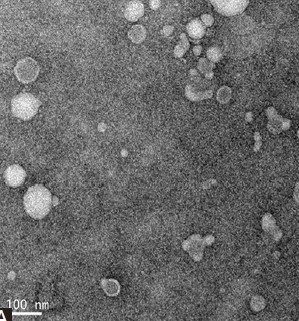Plasma exosome-derived fragile site-associated tumor suppressor as a powerful prognostic predictor for patients with ovarian cancer
DOI:
https://doi.org/10.17305/bjbms.2021.6404Keywords:
Fragile-site associated tumor suppressor (FATS), ovarian cancer, exosomes, prognosis, predictive valueAbstract
The objective of the study was to investigate the levels of plasma exosome-derived fragile site-associated tumor suppressor (FATS) and evaluate its prognostic predictive ability in ovarian cancer (OC) patients. Exosome-rich fractions were isolated from the plasma of 90 patients with OC enrolled in this study. The levels of plasma exosome-derived FATS were detected by ELISA. The levels of exosome-derived FATS in OC patients were significantly lower as compared to the healthy controls (P < 0.001). The levels of plasma exosome-derived FATS were higher in OC patients with low grade (1/2), and Federation International of Gynecology and Obstetrics (FIGO) Stages I/II than those in high grade (3/4) and Stages III/IV of the disease (p = 0.003; p < 0.001), respectively. The levels of plasma exosome-derived FATS were significantly higher in OC patients with no lymph node metastasis or no ascites as compared to those with lymph node metastasis or ascites, respectively (both p < 0.001). The levels of plasma exosome-derived FATS were higher in OC patients having CA-125 below 35 U/ml as compared to those with CA-125 greater than 35 U/ml (p < 0.001). Among all enrolled OC patients, both 5-DFS and 5-OS were shorter in patients with lower plasma exosome-derived FATS levels than those with higher levels (both p < 0.001). The area under the receiver operating characteristic curve of plasma exosome-derived FATS was 0.85 (95% CI: 0.76-0.91) for 5-DFS and 0.91 (95% CI: 0.83-0.96) for 5-OS prediction in patients with OC. Plasma exosome-derived FATS levels in OC patients were significantly downregulated. Low levels of plasma exosome-derived FATS had a significant relationship with FIGO Stages III/IV, high grade, ascites, higher levels of CA-125, lymph node metastasis, and prognosis of OC patients. Thus, our findings may provide insights for the development of a new strategy OC treatment.
Citations
Downloads

Downloads
Additional Files
Published
Issue
Section
Categories
License
Copyright (c) 2021 Renjing Ju, Xiaochun Chen, Shiliang Zhang, Bin Liu, Hao Pei, Fan Tu, Jun Liu, Hao Yu

This work is licensed under a Creative Commons Attribution 4.0 International License.
How to Cite
Accepted 2021-09-01
Published 2022-06-01









